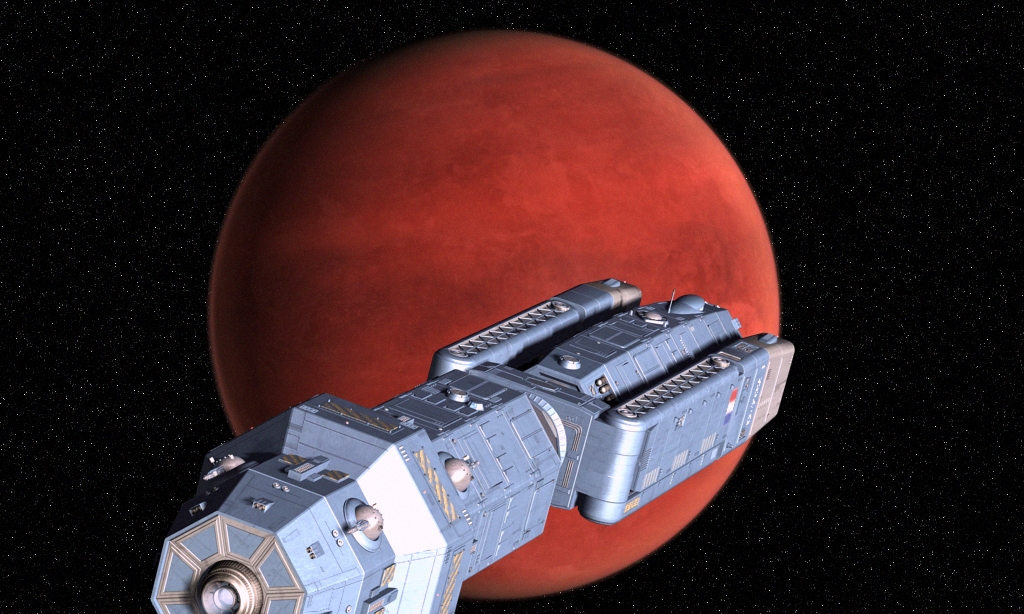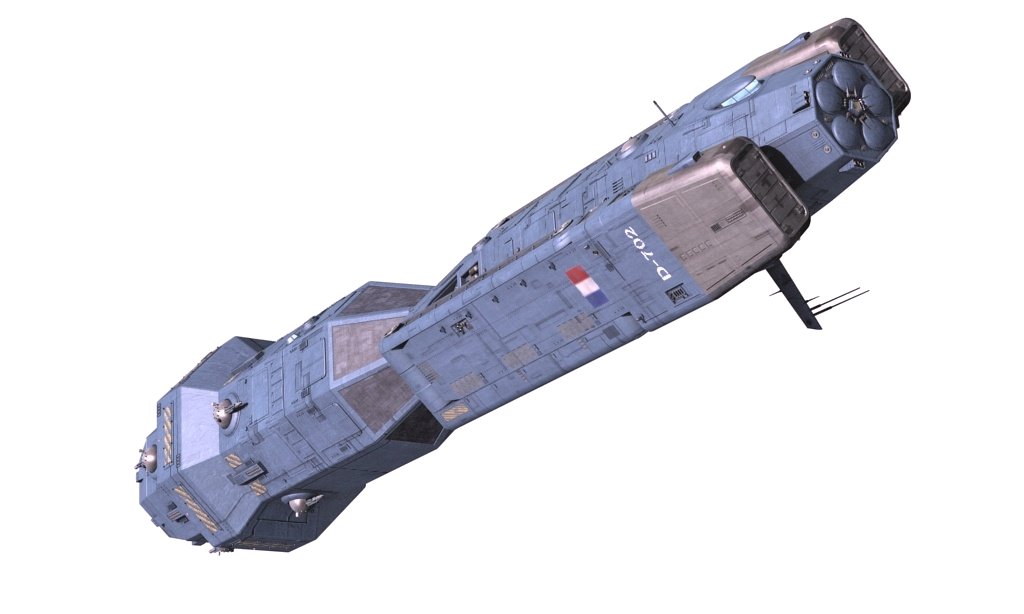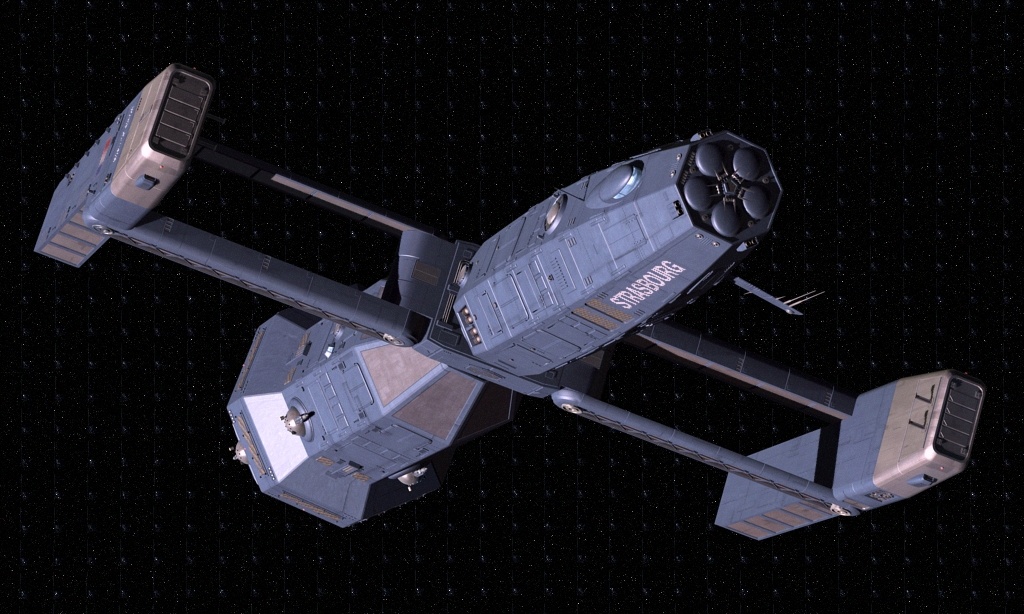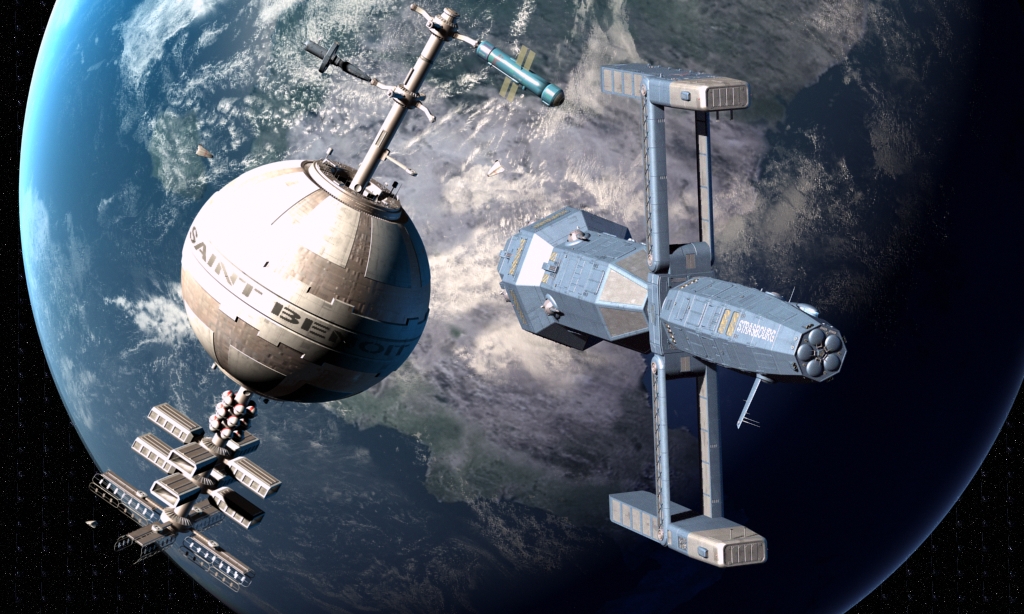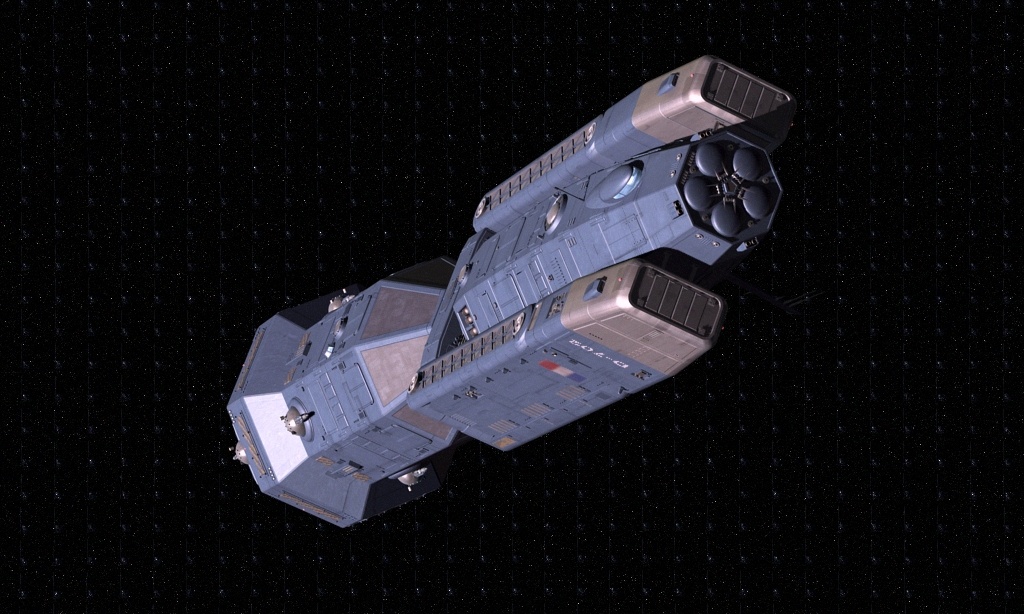Paris Class
|
|
Narrative
Dunkerque had mapped almost
all activity in the system since taking over from a small privateer
that had scuttled back to Aurore to resupply.
The captain was confident now that she could successfully complete her
mission and ensure Rochemont’s 3rd Relief Expedition could slip almost
un-noticed into the system before discharging and moving on to reinforce
Borodin’s hard pressed fleet. All she had to do now was destroy the Kafer Oscar Class
piquet ship that was guarding this approach, which surely wouldn’t miss
the arrival of almost the whole of Rochemont’s fleet. The engagement
was now only an hour or so away as the roving picquet’s
route brought it towards the silent Dunkerque and its pre-deployed missiles. In space alongside the
ship killers was a mobile sensor drone configured to mimic the signature
of the Oscar and broadcast copies of its routine messages. It was crude,
but it might just work.
The
Paris-class started out as
a privately funded project to develop a highly capable destroyer class
warship following on from the classic 70’s Maréchal-class but incorporating
advances in space naval technologies that had been developed since then.
Initial development from 2289 and was spurred on by Central Asian War
experience but political infighting within the Junta delayed any decision
on building any of these new ships. Indeed
it took the fall of the Junta and the defeat to The
The
|
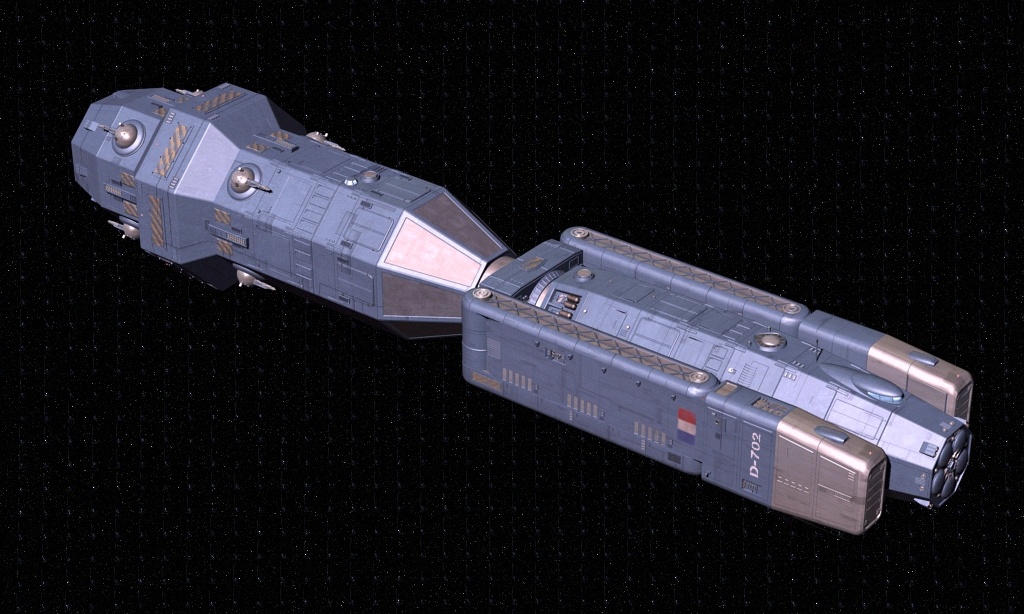
|
Below: Strasbourg closed down for action re-fuelling at QAS prior to crossing into the Beta Canum Cluster in early 2302. (MSIF Media Ops.)
The
-
A combination of sensors and primary
hard hitting missile armament. -
A strong secondary close combat and point
defence armament. -
Combat speed to match the fastest warships
then in production. -
Sustainability to allow
for extended operations in remote areas of the frontier. The
hull has three main components and is armoured with RSC
10 advanced composite and with advanced stealth masking: -
The bow which includes the bulk of the
sensors, the missile arrays and the TAC as
well as some recreational areas. -
The spin habitats which include the main
living areas, galley and entertainment areas. The ship’s primary med
section is located in one of these arms. Like the Suffren-class
these habitats are retractable for combat operations.
-
The stern is divided into five main levels
and includes bridge and secondary med centre, hanger and small ship
operations, cargo and storage, primary engineering area and drive space
and the secondary engineering area.
Overall
dimensions: -
Length 80m -
Tonnage 5,200 tonnes Armament The
armament of the Paris-class has remained standard throughout
their service and includes: -
20 RITAGE-2 missiles with
5 bow launchers with five remote pilots -
8 Guiscard LL-120 lasers
(x 1 +1 dbl) in masked turrets with UTES capability -
2 LL-7 (6, 5x2) submunition
dispensers Electronics Sensor
systems are provided by DARLAN OPTO-PHYSIQUE
while the targeting computer is part of the P-25T integrated fighting
system provided by ROCHARD. -Active-Passive
with one working station: -
DSAP S-2295. (Active: 16) -
Passive with one working station: -
DSMSP S-2296T (Passive: 12) -
Standard Navigation systems, Gravitational
sensors, Deep system scanners. -
Power Plant: ROUCHARD-LIGGET 50Mw fission reactor. -
Fuel: 25 cubic meters to refuel utility
shuttles docking with the ship. -
Drive:
ROUCHARD-LIGGET “Propulseur Jérôme” PJ-50M; 50MW new military stardrive. The
two classes have a standard crew of 97 crew distributed as below: -
20 in bridge. -
15 in TAC -
36 in engineering. -
20 in troop bay. -
2 in small craft. -
4 in medical bay. The
|
Above:
Strasbourg
departing from Adlerhorst orbit in late 2301 prior to the 3rd Relief Expedition.
(MSIF
Media Ops.)
Service
History
The
The
near simultaneous completion of Dunkerque and On
their return to Beta Canum DC-10 was re-tasked by the 3rd Fleet to participate
in a piracy suppression mission following fears that a Kafer raider
could be operating deep in human space. In fact the pirate turned out
to be a simple human raider, who was soon tracked down and forced to
surrender. Following this operation and on completion of their somewhat
eventful shake-down cruise the Dunkerque and The
Kafer invasion and the destruction of Hochbaden saw the swift dispatch
of DC-10 back up the French Arm where they were placed under command
of Rochemont’s 3rd Fleet where they were given a free roving raiding
and reconnaissance role. In more than a year of operations these two
ships were at the forefront of Allied operations and often worked in
combination with other crack squadrons such as Shane’s Australians out
of Eta Bootis and Campbell’s Anglo-Germans from Grosshiddenhafen. Currently
the two ships are undergoing much needed maintenance at Beowulf and
are officially in reserve. However it is expected that within months
they will be involved in operations at the end of the Eta Bootis Finger.
Vessels:
|
Below:
Strasbourg
on return to Sol late in 2300.
(MSIF
Media Ops.)
Statistics
Original
Date of Design: 2289-2294 Warp
Efficiency: 3.72 (all power to engines), 3.07 (tactical systems
powered up), 1.60 (sustained cruise); Power Plant: 50 MW fission
(Fuel: 200 tons for lander); Range: 7.7; Mass: 5,200 tons; Cargo
Capacity: 860 m3; Comfort: 0; Total Life Support:
100 people for 180 days; Ordnance Carried: 20 Ritage-2 missiles
in 5 launchers, 12 LL-7 submunitions (5x2)
in 2 launchers; Crew: 97 (20 Bridge, 15 TAC,
36 Engineering, 2 Small Craft Maintenance and Pilot, 20 Troops, 4 Medical)
Movement:
6 (7 with all power to drive); Targeting Computers: +2; Radiated
Signature: 3 (6); Screens: None; Armour: 4; Radial
Reflected: 6; Lateral Reflected: 7; Radial Profile:
-2; Lateral Profile: +1; Hull Hits: 48/12/24; Power
Plant Hits: 60/12 Surface
Fixtures Weapons:
8 x1+1dbl masked turrets (2x 1234, 2x 1238, 2x 5678, 2x 4567), all UTES
equipped Critical
Hits, Crew Section Bridge:
Captain; Navigator; 2x Communications; Helm; Engineer; 3x Computer Damage
Control: 18 (6 teams) Price:
MLv134.278, exclusive of ordnance |
